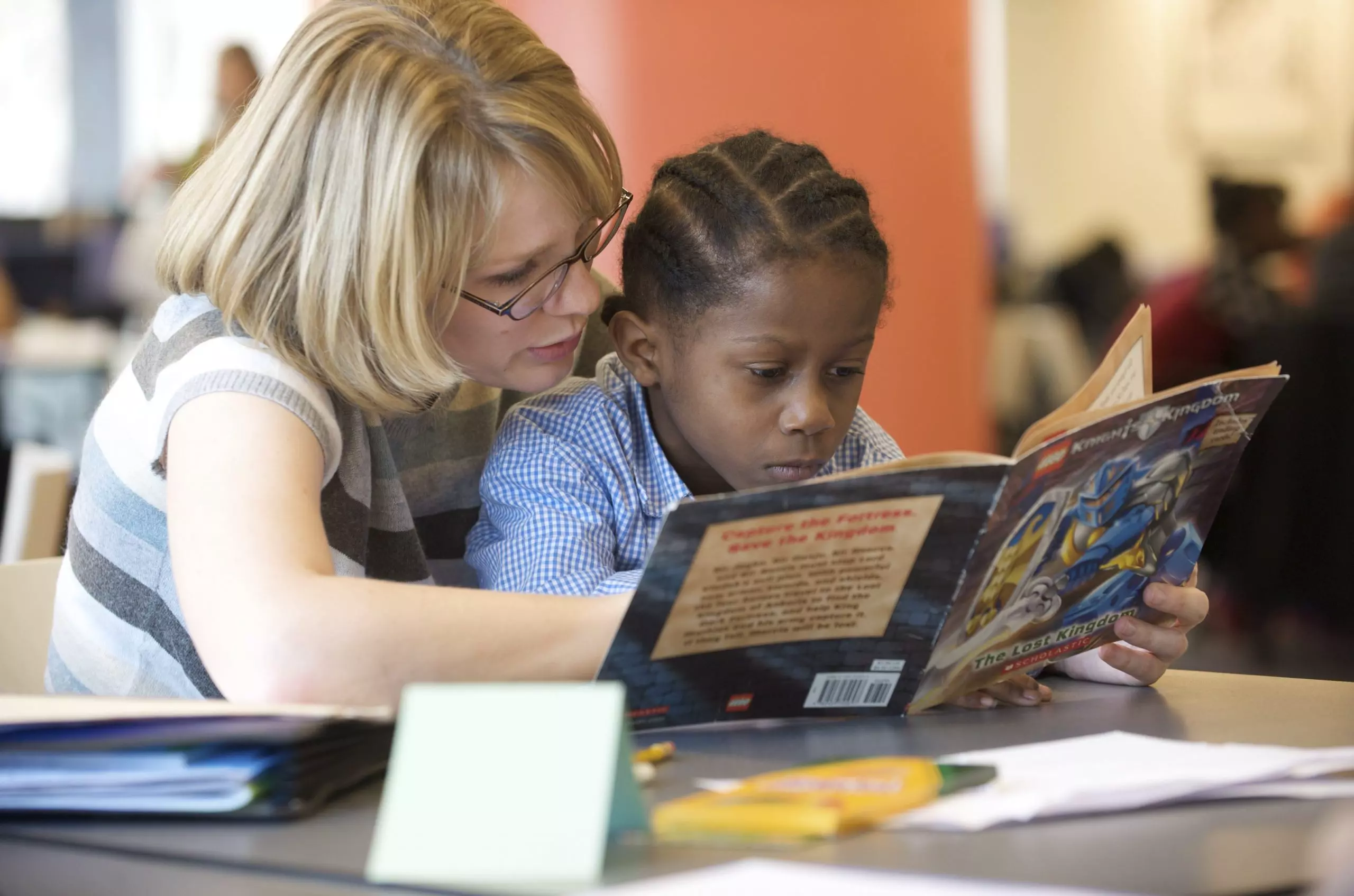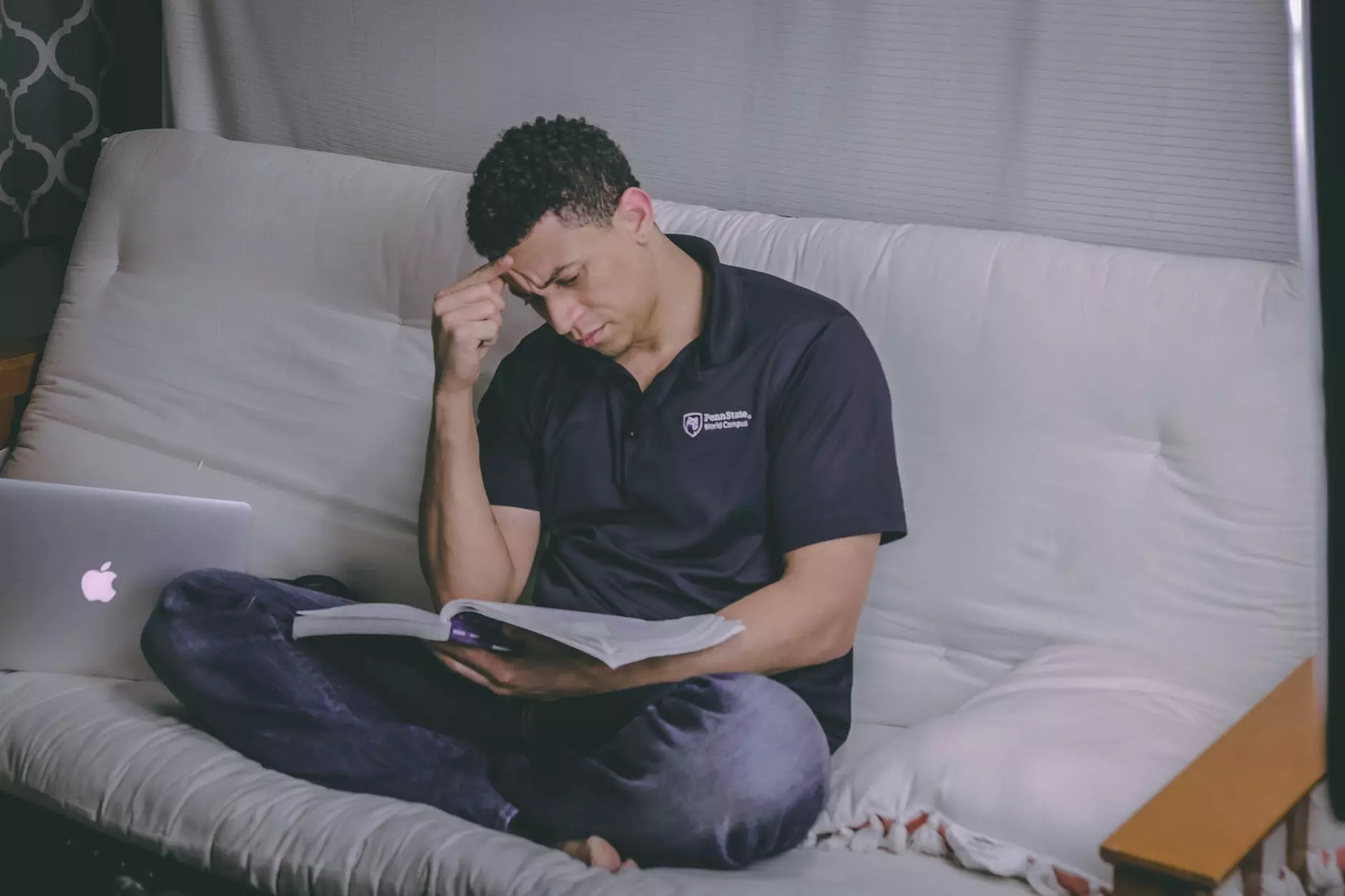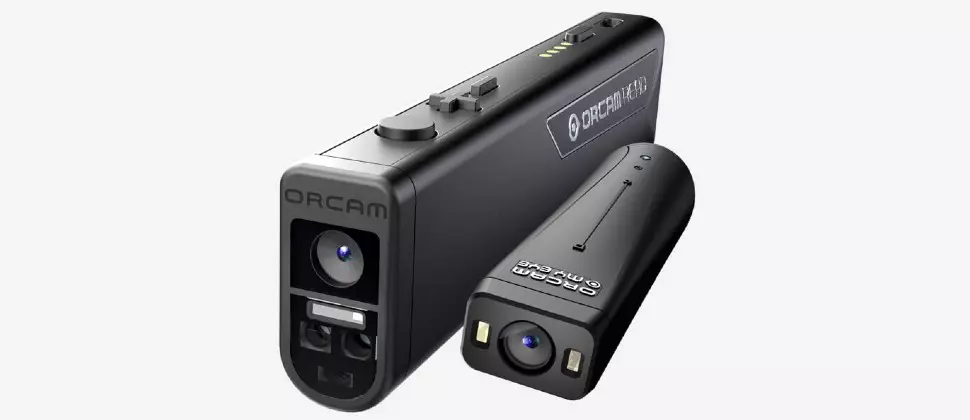How To Help Dyslexic Students: Dyslexia Reading Strategies
2021-06-05 | By Orcam Staff

Best Methods on How To Help Dyslexic Students
As a teacher, you might meet a wide range of students, each with their unique challenges and personalities. Among these, some challenges may stem from behavior, while others are related to learning differences. A particularly common yet often daunting challenge involves teaching students with dyslexia how to read. Dyslexia, a learning difference that primarily affects reading and related language-based processing skills, can make traditional reading instruction less effective for these students. However, with the right strategies and understanding, it is entirely possible to support and enhance the reading abilities of dyslexic students effectively.
In this blog, we will delve into various techniques and approaches designed to help students with dyslexia. We'll start by emphasizing the importance of creating a supportive and understanding classroom environment. This involves recognizing that dyslexic students perceive and process information differently, which necessitates tailored teaching methods. One effective strategy is to incorporate multisensory learning experiences, which engage more than one sense at a time, helping to reinforce learning through visual, auditory, and kinesthetic means.
Moreover, breaking down reading tasks into smaller, more manageable parts can significantly benefit dyslexic students. This approach, often referred to as structured literacy, involves explicit instruction in phonics, vocabulary, and sentence structure, allowing students to build upon their skills gradually. Providing clear, concise instructions and using graphic organizers can also aid in making lessons more accessible.
Another key aspect of supporting dyslexic students is the use of assistive technology. Tools such as text-to-speech software, audiobooks, and digital note-takers can make a significant difference in how these students access and engage with reading materials. Additionally, fostering a positive attitude towards reading by offering materials that align with the student's interests and reading level can encourage a love for reading, despite the challenges they face.
Patience and consistent encouragement are crucial when working with dyslexic students. Celebrating small successes and progress, no matter how minor, can boost their confidence and motivation. Remember, the goal is to foster a love for learning and reading, despite the difficulties dyslexia may present.
In conclusion, teaching students with dyslexia requires a thoughtful, accommodating approach that goes beyond traditional teaching methods. By employing strategies that cater to their unique learning needs, such as multisensory learning, structured literacy, and the use of assistive technology, teachers can make a profound difference in their students' reading abilities and overall academic success. Let's empower our dyslexic students by providing them with the tools and support they need to thrive.
Consider Training As An Orton Gillingham Specialist

Traditional methods of strategies for teaching reading to children with dyslexia have not been easy or necessarily successful. In the 1930s, the Orton Gillingham method was created. Like reading therapy, the Orton Gillingham method is a philosophy for teaching the structure and code of the English language with sequential, systematic, multi-sensory, and cumulative techniques. This philosophy is based on extensive studies of children with language processing difficulties like dyslexia. It is also meant to help children with reading difficulties and mentor their teachers accordingly. The method incorporates tactile and visual as well as auditory elements.
Becoming an Orton Gillingham specialist means not only studying theory but spending hours practising on students under the direction of a highly qualified trainer. The average students requires 2 to 4 sessions per week, depending on how severe the reading deficit, and results can be exceptionally rewarding.
Educational Games

A game’s design for dyslexic students is an awesome teaching strategy for students with dyslexia because any learner can benefit from them, so you can easily incorporate them into lessons for the whole class. Nothing will excite your students more than playing games!
There are hundreds of apps and games designed for dyslexic students out there. Some popular ones include:
Simplex Spelling – if you have iPads in your classroom, these games help build up students’ understanding of phonics and how words are constructed. The apps improve English spelling and reading skills by using a powerful combination of phonics lessons, spelling/word patterns, and contextually relevant spelling rules.
Dyslexia Workbooks – If you’re classroom is not equipped with the latest technology, you can order some Dyslexia Games workbooks for your students. From art to puzzling to drawing to word searches, the Dyslexia Games workbooks bring the joy back into learning while using art and logic to retrain the brain.
Patience and Understanding

The best strategy you can probably use to deal with dyslexic students is good old-fashioned patience and understanding.
Don’t ask a person with dyslexia to read aloud, as words are likely to be mispronounced and cause embarrassment.
Accept their homework if it’s typed on a computer and not handwritten, as physical handwriting can be extremely hard for people with dyslexia.
Give them the opportunity to answers questions orally instead of having them write them down, as it’s possible they understand the material but just have difficulty writing it into legible sentences.
And always use praise over criticism. They are already struggling with their self confidence knowing they can’t do what the average student can, so building up their self esteem is key in getting them to overcome these hurdles.
Assistive Technology and Tools

A pocket spell checker can be a really great place to start when it comes to supplying your dyslexic student with a resource to help them write more easily. The dyslexic learner types in a word how they think it’s spelled, often phonetically and the spell checker will return a correctly-spelled match. This reinforces the student’s confidence that he is handing in a document with the words spelled correctly and that he won’t be embarrassed.
When it comes to computers and typing, teaching strategies for students with dyslexia abound. One very popular option for students who are just being introduced to typing is a colored keyboard. It aims to help assist learning by having an easy-to-remember color-coordination system.
While pocket spell checkers and colored keyboards are helpful, nothing can beat the feeling of being able to read independently and instantaneously.
That’s where OrCam Learn comes in. A student can hold the OrCam Learn device in their hand and with just the click a button, have an entire page of text read to them instantaneously. Instead of reading line by line, a laser captures the full text on the page and then reads it back to the user. Zero percent struggle. For a full demonstration of how the OrCam Learn works, watch the video below:
Dyslexia Reading Strategies
Implementing effective dyslexia reading strategies is crucial for individuals with dyslexia to enhance their reading skills and confidence. These strategies provide a pathway to overcoming reading difficulties, ensuring a more enjoyable and proficient reading experience. When paired with innovative tools like the OrCam Learn device, specifically crafted to assist those with dyslexia, the combination becomes a powerful ally in the quest for reading success.
Dyslexia Reading Strategies Practical Tips
Break Down Reading Tasks: Divide texts into smaller, more manageable units like sentences or paragraphs to help concentrate on one portion at a time, making it easier to build comprehension skills gradually.
Employ Multisensory Techniques: Use multiple senses during the reading process. Incorporate visual aids (e.g., color-coded texts, highlighted words), auditory supports (reading aloud, audio books), and tactile engagement to enhance comprehension and fluency.
Provide Constructive Feedback: Regular, specific feedback is crucial for identifying improvement areas and motivating continued effort. Tools like the OrCam Learn device can offer immediate assistance and tailored guidance.
Utilize Assistive Technology: Devices equipped with optical character recognition (OCR) technology, such as the OrCam Learn, can translate printed text into spoken words, making written content more accessible for individuals with dyslexia.
Implement Visual Interventions: Use colored overlays to reduce glare and visual distortion, making texts easier to read. Dyslexia-friendly fonts can also improve reading fluency by optimizing letter spacing and size.
These strategies, especially when combined with innovative tools like the OrCam Learn device, can significantly support individuals with dyslexia in enhancing their reading skills and confidence.
Breaking down reading tasks into smaller, more manageable components is a cornerstone strategy for aiding those with dyslexia. By dissecting texts into smaller units, such as individual sentences or paragraphs, readers are better able to concentrate on digesting one portion at a time. This method reduces the overwhelm of facing too much information at once and enables a gradual build-up of comprehension skills.
Employing multisensory techniques is another effective approach within dyslexia reading strategies. Engaging multiple senses — sight, hearing, and touch — simultaneously can significantly bolster learning and reading proficiency. Utilizing visual aids like color-coded texts or highlighted words, in conjunction with auditory supports like reading aloud or using audio books, can profoundly enhance comprehension and fluency for dyslexic readers.
Providing regular and constructive feedback is vital for readers with dyslexia. Such feedback helps pinpoint areas needing improvement while offering specific guidance on enhancing reading skills. It serves as a motivational tool, encouraging continuous effort and visible progress. The OrCam Learn device is particularly useful here, offering immediate assistance and tailored corrective guidance to support the reader's unique needs.
Assistive technology, particularly devices like OrCam Learn, is indispensable in executing dyslexia reading strategies effectively. Utilizing cutting-edge optical character recognition (OCR) technology, the OrCam Learn device translates printed text into spoken word, thereby making written content more accessible to individuals with dyslexia. This tool enables users to independently engage with a wide array of written materials, from academic texts to leisure reading.
Visual interventions also play a supporting role in dyslexia reading strategies. Tools such as colored overlays can alleviate visual stress and improve text readability by reducing glare and minimizing visual distortion. Additionally, dyslexia-friendly fonts are designed to facilitate reading by optimizing letter spacing, shape, and size, thus enhancing reading fluency and speed.
Highlighting the advantages of dyslexia reading strategies, alongside the supportive features of the OrCam Learn device, Orcam not only showcases its product but also demonstrates a comprehensive understanding of the needs of individuals with dyslexia. Maintaining an informative and persuasive tone is key, illustrating how the OrCam Learn device integrates with these strategies to assist readers on their journey to reading proficiency. This approach not only communicates the device's value but also empowers individuals with dyslexia to transcend reading challenges and realize their full potential.
Dyslexia teaching methods
Dyslexia teaching methods encompass a comprehensive array of approaches and tools meticulously designed to address the unique learning requirements of individuals with dyslexia. These strategies aim to create an inclusive and supportive learning environment that maximizes the potential for success. One widely employed method is the utilization of multisensory instruction, which combines auditory, visual, and kinesthetic elements to enhance learning and retention. By engaging multiple senses simultaneously, this approach reinforces the learning process and facilitates the development of stronger neural connections.
Moreover, assistive technology plays a pivotal role in dyslexia education. Various technological aids, such as text-to-speech software, optical character recognition (OCR) devices, and speech recognition software, can significantly assist students with dyslexia in accessing and comprehending written information. These tools provide an alternative means of reading, writing, and organizing thoughts, enabling students to navigate academic tasks with greater ease and confidence.
Specialized reading programs are also vital components of dyslexia teaching methods. These programs employ structured, systematic, and sequential instruction, focusing on phonological awareness, phonics, decoding skills, and reading fluency. By breaking down reading into manageable components and providing explicit instruction, these programs empower students with dyslexia to grasp fundamental reading skills and progressively build upon them.
Visual aids, such as graphic organizers, charts, and diagrams, are additional resources that can enhance understanding and information retention for students with dyslexia. These visual representations help to organize complex concepts and enable students to make connections and grasp relationships between different ideas. Additionally, visual aids can serve as valuable memory cues, reinforcing comprehension and supporting long-term retention.
Continuous feedback plays a crucial role in dyslexia instruction. Regular assessments and constructive feedback enable teachers to gauge students' progress, identify areas that require additional support, and adapt instructional strategies accordingly. Positive reinforcement is an integral part of this feedback process, as it fosters motivation, boosts self-confidence, and encourages students to persist in their efforts.
All things considered, dyslexia teaching methods encompass a multifaceted approach that addresses the specific challenges faced by individuals with dyslexia. By incorporating techniques such as multisensory instruction, assistive technology, specialized reading programs, visual aids, frequent feedback, and positive reinforcement, educators can create an inclusive learning environment that promotes the academic growth and overall well-being of students with dyslexia.
Dyslexia strategies for reading
Strategies for reading with dyslexia can include a range of techniques and tools that can make reading more accessible and enjoyable for people with dyslexia. These strategies may include the use of assistive technology, such as text-to-speech software or a dyslexia reader. Other strategies may include the use of colored overlays to reduce visual stress, the use of specialized fonts, or the use of a reading ruler to help keep track of the text.
Dyslexia Teaching Strategies
When it comes to teaching dyslexic students, employing effective strategies and techniques can make a significant difference in their learning experience. Educators can utilize various approaches to create an inclusive and supportive environment that meets the unique needs of dyslexic students. As Orcam aims to promote the OrCam Learn device, which is designed to support dyslexic learners, it is crucial to adopt an informative, persuasive, and professional tone while discussing how to teach dyslexic students.
Breaking down reading tasks into smaller parts is a fundamental technique that allows dyslexic students to approach reading more comprehensively. By deconstructing texts into manageable segments, such as sentences or paragraphs, educators can help students focus on understanding and analyzing smaller units of information. This approach not only enhances comprehension but also assists dyslexic students in gradually building their reading skills and confidence.
Incorporating multisensory instruction is another powerful method for teaching dyslexic students effectively. This approach engages multiple senses, such as sight, hearing, and touch, to reinforce learning. For instance, educators can combine visual aids, auditory cues, and kinesthetic activities to enhance reading comprehension and retention. By incorporating various modalities, dyslexic students can process information through different channels, increasing their chances of understanding and retaining what they have learned.
Providing frequent feedback is essential in supporting dyslexic students' learning progress. Regular and specific feedback helps them understand their strengths, areas for improvement, and the steps needed to enhance their reading skills. Constructive feedback offered in a positive and encouraging manner reinforces their efforts, boosts their motivation, and empowers them to persist in their learning journey.
Assistive technology, such as the OrCam Learn device, can be a valuable tool for teaching dyslexic students. The OrCam Learn device utilizes cutting-edge technology to convert printed text into audio, supporting dyslexic learners in accessing and comprehending written materials independently. By highlighting the features and benefits of the OrCam Learn device, Orcam can demonstrate how this assistive technology seamlessly integrates with dyslexia teaching strategies to enhance students' reading abilities and overall learning experience.
In addition to specific techniques, promoting a positive learning environment is vital for dyslexic students. Educators should focus on fostering a supportive atmosphere that encourages confidence and self-esteem. This can be achieved by celebrating individual achievements, emphasizing strengths, and providing ongoing encouragement. By recognizing dyslexic students' unique talents and fostering a sense of belonging, educators can help them overcome challenges and develop a positive attitude toward learning.
Teaching dyslexic students requires implementing effective strategies such as breaking down reading tasks, employing multisensory instruction, and providing frequent feedback. Additionally, utilizing assistive technology like the OrCam Learn device can greatly enhance their reading experience. Creating a supportive learning environment that fosters confidence and self-esteem is equally crucial. By conveying these strategies and emphasizing the compatibility of the OrCam Learn device with effective teaching methods, Orcam can showcase how their product can support dyslexic students and empower them to thrive academically.
How to teach students with dyslexia
Teaching students with dyslexia requires a tailored approach that recognizes their unique learning needs and challenges. Dyslexia is a learning difference that affects a person's ability to read, write, and spell accurately. To effectively support students with dyslexia, educators employ specific techniques and strategies to help them overcome difficulties and reach their full potential.
One key technique is the use of multisensory instruction. This approach engages multiple senses, such as visual, auditory, and kinesthetic, to enhance learning. By incorporating various modalities, educators can provide a more comprehensive and accessible learning experience for students with dyslexia. For example, using visual aids, manipulatives, and interactive activities alongside verbal instructions can reinforce concepts and improve understanding.
Breaking down reading tasks into smaller parts is another effective technique. Dyslexic students often struggle with decoding words, recognizing letter sounds, and comprehending texts. By breaking down reading tasks into manageable chunks, educators can help students focus on individual components, such as phonetic patterns, word recognition, and comprehension strategies. This approach allows students to build their skills gradually and gain confidence in their reading abilities.
The use of assistive technology is highly beneficial for students with dyslexia. Assistive technology tools, such as text-to-speech software, speech-to-text applications, and specialized dyslexia-friendly fonts, can help mitigate reading and writing challenges. These tools provide alternative ways for students to access and express information, making learning more accessible and inclusive.
Frequent feedback plays a vital role in supporting students with dyslexia. Timely and specific feedback helps students understand their progress, identify areas of improvement, and build on their strengths. Providing constructive feedback in a supportive manner encourages students to persist in their efforts and reinforces their self-confidence.
Creating a supportive learning environment is crucial for students with dyslexia. Educators can foster an inclusive atmosphere by promoting a growth mindset, celebrating individual achievements, and encouraging peer support. By valuing and respecting each student's strengths and challenges, educators can cultivate an environment where students feel safe to take risks, ask questions, and seek assistance.
Lastly, it is essential to recognize and work with the student's strengths and interests. Dyslexic students often excel in areas such as creativity, problem-solving, and out-of-the-box thinking. By tapping into their strengths and incorporating their interests into the curriculum, educators can boost engagement, motivation, and overall learning outcomes.
Teaching students with dyslexia requires a multifaceted approach that combines multisensory instruction, breaking down reading tasks, using assistive technology, providing frequent feedback, creating a supportive learning environment, and leveraging the strengths and interests of the students. By employing these techniques, educators can help students with dyslexia overcome challenges, develop essential skills, and thrive academically.
Teaching dyslexic students to read
Teaching dyslexic students to read can be a challenge, but some many strategies and techniques can be effective. Some tips for teaching dyslexic students to read include breaking down reading tasks into smaller parts, using multisensory techniques, and providing frequent feedback. It can also be helpful to use assistive technology, to provide positive reinforcement, and to create a supportive learning environment that fosters confidence and self-esteem.
We hope that using some of the above resources you will be able to work better with your pupils, and your teaching strategies for students with dyslexia will improve. If you’d like to learn more about the OrCam Learn, enter your information below and one of our representatives will be in touch with you soon.
More Stories

Discover the Best 20 Online Havens for Book Lovers | OrCam
2024-05-08 | By Justin Lubomirsky

Best Gift for Blind or Visually Impaired Women. Top Christmas Gift Ideas! - OrCam
2024-03-14 | By OrCam Staff

Dyslexia in Adults: An Advantage, Not a Limitation - OrCam
2024-03-11 | By OrCam Staff

Payment Plan for Your OrCam Device - OrCam
2024-03-07 | By OrCam Staff

Voice-Activated Devices: Revolutionizing Accessibility & Tech | OrCam
Explore the future of voice technology and its impact on daily life. Your journey into a smarter world starts here!
2024-01-30 | By OrCam Staff
.png)
Inclusive Community Guide: Support for the Visually Impaired
Empower the visually impaired with innovative solutions. Learn how your actions can make a meaningful impact.
2024-01-30 | By OrCam Staff



